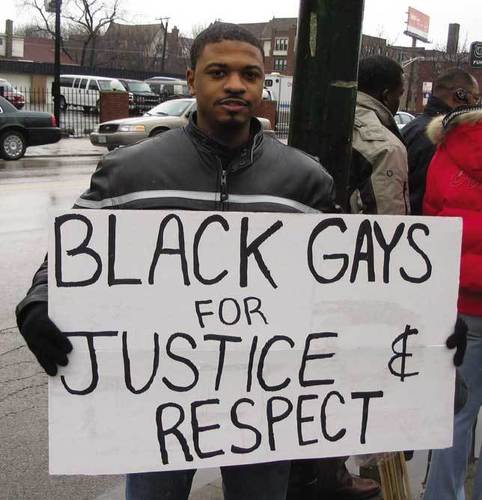This  week Ruth Bader Ginsberg drew an important distinction between the gay rights movement and the civil rights movement – and she’s not been alone in her assessment. The gay rights movement, which gained dramatic momentum following the protest at The Stonewall Inn in 1969, has had notable success. It is less than 40 years later and people who couldn’t even say the word ‘gay’ back then now support legal gay marriage. Everyone says it’s just a matter of time before everyone will be able to legally marry. National organizations and LGBT organizations across the country are scrambling to figure out what the next major gay rights cause will be – a new mission and purpose. I use “gay rights” here on purpose because transgender rights are still woefully hard to find and certainly have not enjoyed the success that gay rights have enjoyed.
week Ruth Bader Ginsberg drew an important distinction between the gay rights movement and the civil rights movement – and she’s not been alone in her assessment. The gay rights movement, which gained dramatic momentum following the protest at The Stonewall Inn in 1969, has had notable success. It is less than 40 years later and people who couldn’t even say the word ‘gay’ back then now support legal gay marriage. Everyone says it’s just a matter of time before everyone will be able to legally marry. National organizations and LGBT organizations across the country are scrambling to figure out what the next major gay rights cause will be – a new mission and purpose. I use “gay rights” here on purpose because transgender rights are still woefully hard to find and certainly have not enjoyed the success that gay rights have enjoyed.
They say slavery ended nearly 150 years ago, yet this country still imprisons 30% of young black men. Black and brown people are several times more likely to live in communities riddled by poverty with no access to opportunity. They are more likely to drop out of their under-performing school, and be arrested or stopped by police – often landing them in jail. As we have seen in Ferguson (and in many other cases), young men like Michael Brown are more likely to be killed.
The reason the gay rights movement has moved ahead so quickly is because gay and lesbian people live in families all across the country. In every city, in every town, in every suburb. Every time someone comes out, it forces the entire extension of people in that person’s family and friend network to question their assumptions about gay people.
People who have been at odds with “the gays”, found them sick, wrong, unqualified parents and undeserving spouses now have children that fall into that category. And their personal knowledge of their son, their daughter, brother, sister, aunt, best friend, their relationship with that person, conflicts with the societally-driven stereotype they have always known. It forces them to confront their biases in a very personal way. And love is winning out. People are renouncing their bias. As people know someone who is gay, they become supportive of gay rights. This is backed by ample research.
Research also shows that lesbian, gay bisexual and transgender (LGBT) people of color are at greatest risk for poverty, unemployment, incarceration, HIV/AIDS infection, and premature death – whether due to health access issues, suicide, violence or racial profiling. LGBT people of color are not benefiting from the gay rights movement the way that white gay and lesbian people have.
People in the LGBT movement have an opportunity and a responsibility to ensure that all of our brothers and sisters are protected – especially those who are most abused by our system – our brothers and sisters of color. If you’re white – you can take a hint from the gay rights movement. Make some new friends. Expand your family. Get to know your existing friends and family who are people of color – ask them about their experiences. This call extends to the transgender community. If you’re gay or lesbian, make some friends in the transgender community. The killing of the Michael Brown is personal and it should be personal for all of us. Including those of us who have white skin and are cisgender.
———————————————————————
 Kathleen LaTosch is a diversity and inclusion consultant specializing strategic planning for organizational change at nonprofit organizations. She works in Michigan and nationally, assisting organizations in making systemic and lasting change. For more information, visit www.LaToschConsulting.com.
Kathleen LaTosch is a diversity and inclusion consultant specializing strategic planning for organizational change at nonprofit organizations. She works in Michigan and nationally, assisting organizations in making systemic and lasting change. For more information, visit www.LaToschConsulting.com.

